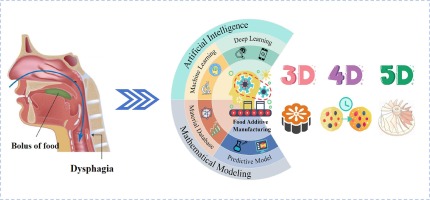
Within a small clear square of soft gel, chemistry mimics comfort. Like how milk alleviates the burn of hot peppers, this innovative artificial tongue replicates that soothing effect to assess just how spicy a food actually is. Developed by researchers in China, the pliable sensor attaches to the same fiery compounds that induce pain on the human tongue, and then converts them into an electrical signal scientists can interpret instead of tasting.
The team drew inspiration from casein proteins in milk, which bind to capsaicin, the element responsible for the burning sensation from chili peppers. They hypothesized that if milk can dampen the heat sensation, it could potentially serve as a biological key for a sensor that identifies it. By merging acrylic acid, choline chloride, and skim milk powder into a gel and then curing it under UV light, they created a milky, tongue-like film that reacted to spice in mere seconds.
Transforming Heat into Data
Capsaicin, piperine from black pepper, and allicin from garlic all produce a pain-like tingling that is notoriously challenging to measure. Quantifying those sensations generally necessitates human taste testers or intricate laboratory analyses. However, when the artificial tongue was exposed to capsaicin, its electrical current decreased significantly within ten seconds. The more intense the spice, the more pronounced the decline. The milk component, functioning as both receptor and buffer, enabled the sensor to apprehend pungency levels ranging from mild to extreme.
In evaluations, the device’s findings closely matched human perceptions. Eight types of peppers and eight spicy foods, including various hot sauces, were evaluated by both the gel and a group of volunteers. The correlation between machine and palate suggested that this milky mimic could eventually spare tongues from unnecessary discomfort.
“Our adaptable artificial tongue holds considerable promise for spicy sensation estimation for portable taste-monitoring devices, mobile humanoid robots, or patients experiencing sensory deficits like ageusia, for instance,” stated Weijun Deng, the principal author of the study.
In contrast to previous synthetic taste sensors, which could detect sweetness or umami, this design specifically targets pungency itself—the chemical burn typically excluded from artificial taste research. The outcome is a sensor capable of differentiating the sting of horseradish from the warmth of ginger and the heat of chili peppers, all employing a material that costs just slightly more than a carton of milk and some standard lab reagents.
Safer Testing for Science
To visualize the method, picture a drop of hot sauce touching the translucent film. Within moments, the electrical signal diminishes, akin to a digital flinch. The identical compounds that would induce sweating in a human tester instead cause a measurable current shift in the gel. By capturing that reaction, scientists can quantify flavor intensity without needing individuals to endure repeated burns.
Currently, the artificial tongue stands as a proof of concept, but the authors envision wide-ranging applications. Food manufacturers could standardize spiciness ratings without subjective panels. Humanoid robots may eventually assess flavor profiles with human-like finesse. Even clinical evaluations for sensory disorders could gain from a device that articulates the language of taste without requiring a functioning tongue.
“The casein-infused artificial tongue could swiftly assess a food’s spiciness level without endangering one’s taste buds,” the researchers concluded in their paper.
Ultimately, this tiny, milk-infused film converts the heat of chili peppers into numerical values, fusing human comfort chemistry with technological accuracy. It embodies a scientific twist on an age-old truth: sometimes, milk truly does improve things.
[ACS Sensors: 10.1021/acssensors.5c01329](https://doi.org/10.1021/acssensors.5c01329)
There’s no paywall here
If our reporting has informed or motivated you, please think about making a donation. Every contribution, regardless of size, empowers us to keep providing accurate, engaging, and reliable science and medical news. Independent journalism demands time, effort, and resources—your support ensures we can continue uncovering the stories that mean the most to you.
Join us in making knowledge accessible and impactful. Thank you for supporting us!